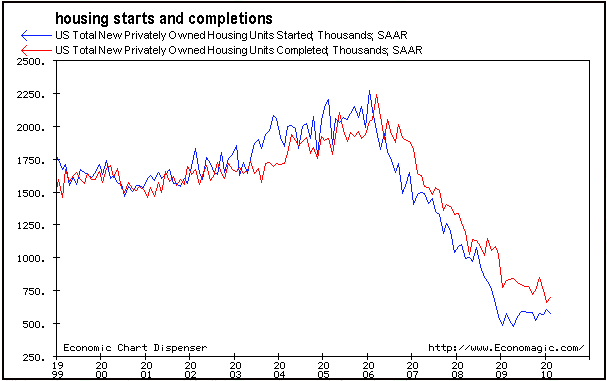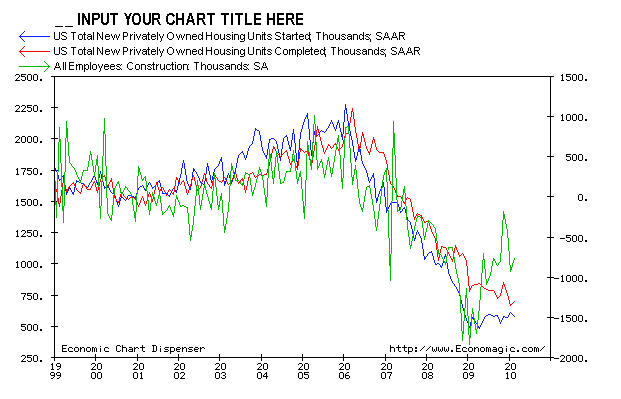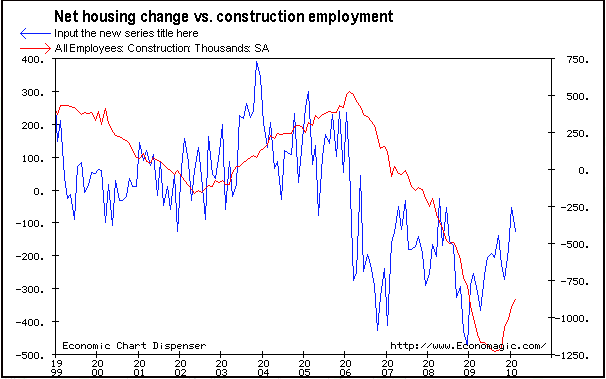An anonymous commenter raised a good point in response to yesterday's entry, in which I said that, housing permits having bottomed, residential construction jobs presumably had as well. The commenter pointed out that housing completions were still in excess of housing starts, so there were probably continuing layoffs in residential construction.
I think the point is well taken, but let's take a closer look. The first graph compares housing starts, in blue, with completions, in red:

Sure enough, there are more completions than starts, although in the last year that gap is narrowing.
In the second graph, I've added construction jobs in green, right scaled. Note that the data doesn't permit you to break down residential vs. commercial construction jobs. Also note that economagic, where the graphs were generated, only allow annualized monthly changes, so the figure is noisier than I'd like:

Again, sure enough, construction jobs seem to correlate with the gap between starts and completions.
To smooth out some of the noise in the graphs, in this last graph the blue line depicts the difference between starts and completions. Note that the series turned negative and is still so, as there are still more completions than starts. The red line in this graph is the one year change in construction jobs (which means the line lags by six months):

In summary, the commenter's point is well taken, but I would add the following:
1. Layoffs in residential construction now are probably much less than they were a year or two ago.
2. The trend in starts vs. completions suggests that the gap will be closed at some point in the next 6 months.
3. At that point layoffs in residential construction will probably end, but because of the lag in commercial construction, layoffs in construction generally will continue to be recorded. This will be the mirror image of what readers of Calculated Risk will recall from 2006 and early 2007, when construction jobs seemed to levitate even though housing starts had taken a cliff-dive.